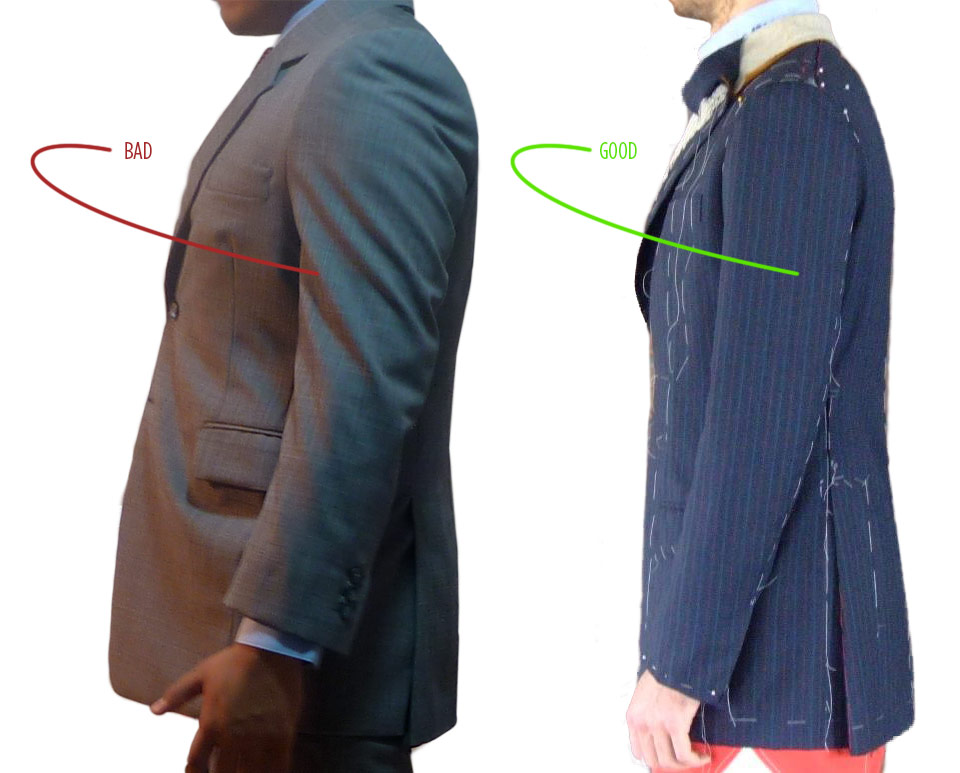SOME BASIC POINTERS ON HOW A SUIT SHOULD FIT
Getting a lot of pushback on the idea that you need more than two weeks to shop for a suit. I think this is bc most people don't know how a suit should fit. So here are five things people often overlook
Getting a lot of pushback on the idea that you need more than two weeks to shop for a suit. I think this is bc most people don't know how a suit should fit. So here are five things people often overlook
https://twitter.com/dieworkwear/status/1648973012761444352
1. Collar Gap
I've already talked about collar gaps. This can be caused by various things: a tight chest, shoulder slope doesn't match your own, or jacket doesn't fit ur posture. From this, you can see how fit is a 3D concept, not as simple as chest size
I've already talked about collar gaps. This can be caused by various things: a tight chest, shoulder slope doesn't match your own, or jacket doesn't fit ur posture. From this, you can see how fit is a 3D concept, not as simple as chest size
https://twitter.com/dieworkwear/status/1636097504847728640
2. Shoulder Divots
Another common issue is shoulder divots, which is when you see an indentation on the sleevehead. This can be caused by poor make. Or an overly narrow shoulder, esp across back. Sometimes can be fix by alteration; sometimes not.

Another common issue is shoulder divots, which is when you see an indentation on the sleevehead. This can be caused by poor make. Or an overly narrow shoulder, esp across back. Sometimes can be fix by alteration; sometimes not.


3. Jacket is Too Tight
If the chest is too tight, the lapels may also buckle away from the body. If the waist is too tight, you will see pulling at the waist button when it's fastened.

If the chest is too tight, the lapels may also buckle away from the body. If the waist is too tight, you will see pulling at the waist button when it's fastened.


4. Jacket is Too Short
A good rule of thumb is that the jacket should always cover your bum. A better rule of thumb is that the jacket should bisect you halfway between your collar and the floor when you're wearing heeled shoes.
A good rule of thumb is that the jacket should always cover your bum. A better rule of thumb is that the jacket should bisect you halfway between your collar and the floor when you're wearing heeled shoes.

5. Sleeve Pitch
Sometimes the jacket's sleeves don't match the natural way your arms hang. This will cause drag lines when you are standing naturally. This can be a very difficult and expensive alteration, which is why you should take time to shop around

Sometimes the jacket's sleeves don't match the natural way your arms hang. This will cause drag lines when you are standing naturally. This can be a very difficult and expensive alteration, which is why you should take time to shop around


6. Balance
A coat's hem should hang evenly when viewed from the side, or the front can be slightly lower than the back. However, the front should never be higher than the back. This will make the coat look like it's riding up on you.

A coat's hem should hang evenly when viewed from the side, or the front can be slightly lower than the back. However, the front should never be higher than the back. This will make the coat look like it's riding up on you.


7. Overly Long Back Rise
RTW manufacturers often build pants with an overly long back rise to sell suits to a broader range of ppl. But as a result, the trousers end up collapsing under the seat. Look at yourself in a three-way mirror and aim for a clean fit



RTW manufacturers often build pants with an overly long back rise to sell suits to a broader range of ppl. But as a result, the trousers end up collapsing under the seat. Look at yourself in a three-way mirror and aim for a clean fit




These are just some basic fit issues. Then there's the issue of how you want the silhouete to look—clean, drapey, elongating, rounded, etc. See this post on how to understand silhouettes in tailoring
putthison.com/how-to-underst…
putthison.com/how-to-underst…
Ultimately, any garment, whether a suit or casualwaer, is about making you look and feel good. But it takes a while to train your eye. This requires sampling things and mulling for a while. I wouldn't want you to plunk $1k on something and regret it later.
If you want to learn more about how tailored clothing should fit, you can read these posts:
putthison.com/tag/fit/
putthison.com/tag/fit/
• • •
Missing some Tweet in this thread? You can try to
force a refresh

 Read on Twitter
Read on Twitter
























